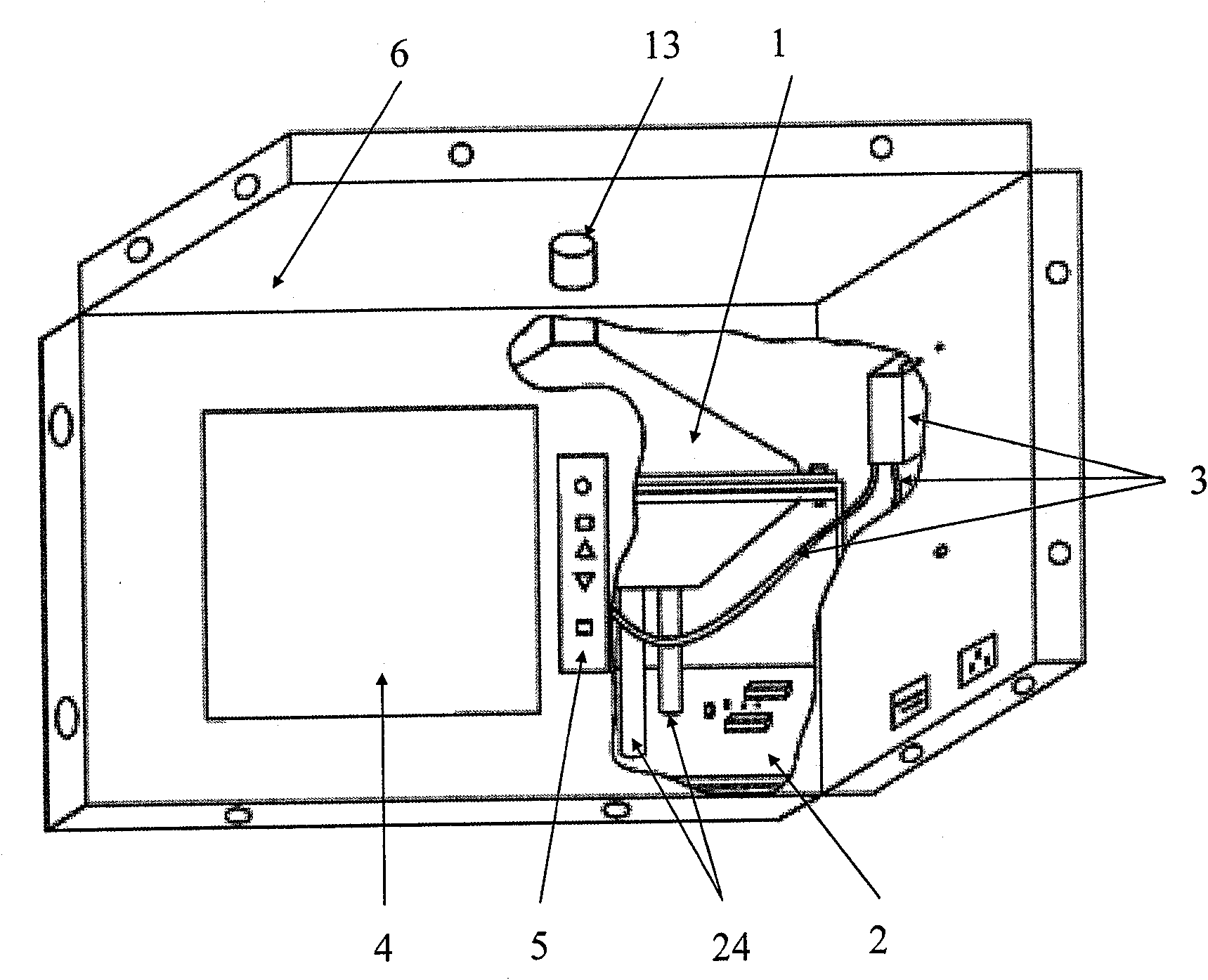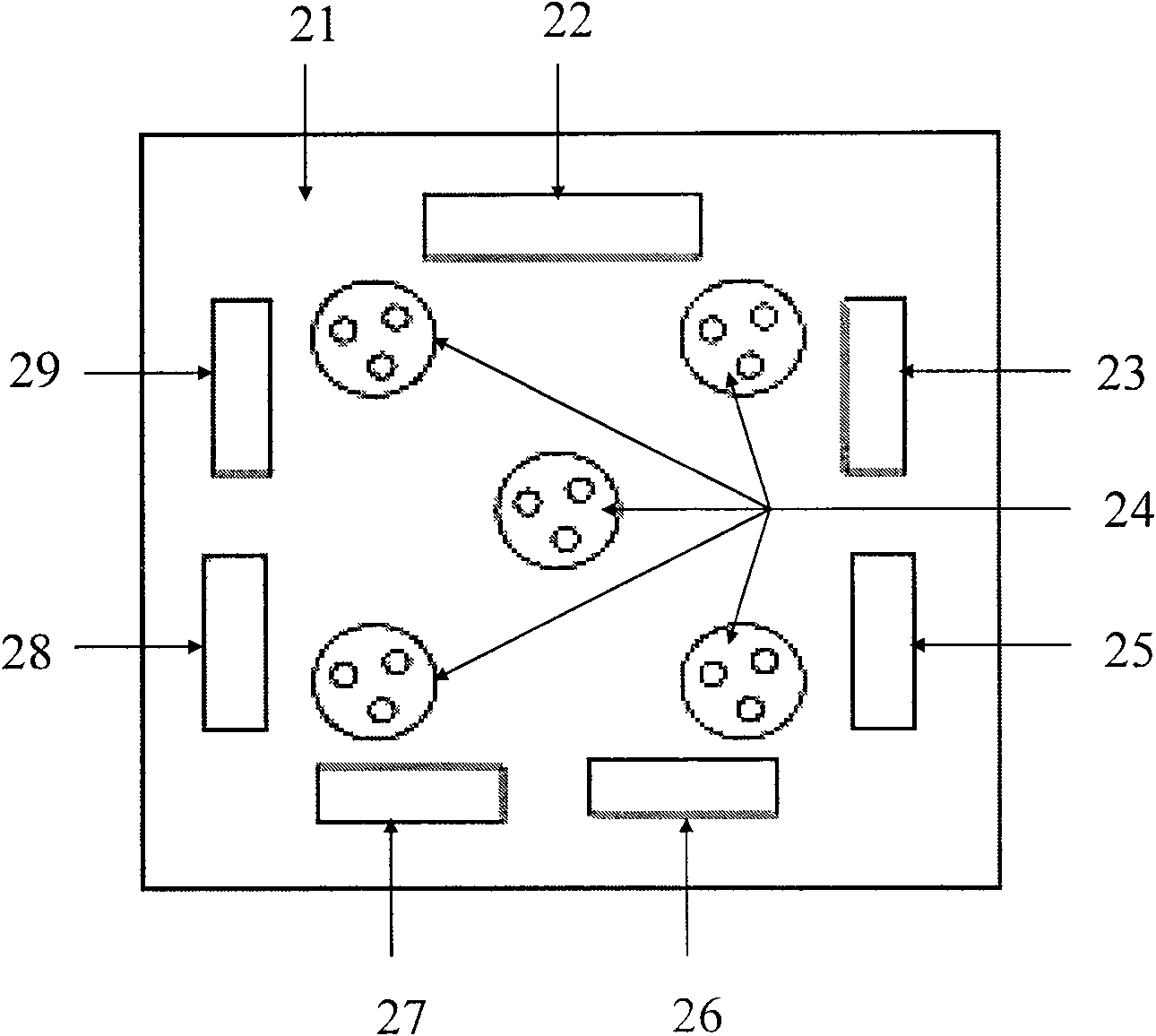Robot bionic olfactory system
A robot and olfactory technology, applied in the field of robotics, can solve the problems that cannot meet the needs of practical applications, the performance is easily affected by the installation position, the function of the olfactory system is single, etc., to achieve the effect of easy replacement, strong versatility, and extended application range.
- Summary
- Abstract
- Description
- Claims
- Application Information
AI Technical Summary
Problems solved by technology
Method used
Image
Examples
Embodiment 1
[0032] First, select and determine the type of gas sensor according to the type and requirements of the gas measured by the olfactory system. In this embodiment, five gas sensors are used to form the sensor array. Among them, 4 gas sensors are 4 series of electrochemical principle gas sensors (produced by British Urban Technology Co., Ltd.), which can respectively detect CO and SO 2 , H 2 S and O 2 A response occurred. This gas sensor only responds to the specific gas, and is less affected or interfered by other gases. The other gas sensor is a PID gas sensor that can measure volatile organic compounds (made by Baseline, USA, model ZPP6000102). The gas sensor only responds to volatile organic compounds, but when using it, you need to know the type of volatile gas to be measured in advance; in other words, select the PID gas sensor according to the type of volatile gas to be detected. Obviously, the olfactory system of this embodiment can detect 5 different gases at the same t...
PUM
 Login to View More
Login to View More Abstract
Description
Claims
Application Information
 Login to View More
Login to View More - R&D
- Intellectual Property
- Life Sciences
- Materials
- Tech Scout
- Unparalleled Data Quality
- Higher Quality Content
- 60% Fewer Hallucinations
Browse by: Latest US Patents, China's latest patents, Technical Efficacy Thesaurus, Application Domain, Technology Topic, Popular Technical Reports.
© 2025 PatSnap. All rights reserved.Legal|Privacy policy|Modern Slavery Act Transparency Statement|Sitemap|About US| Contact US: help@patsnap.com



